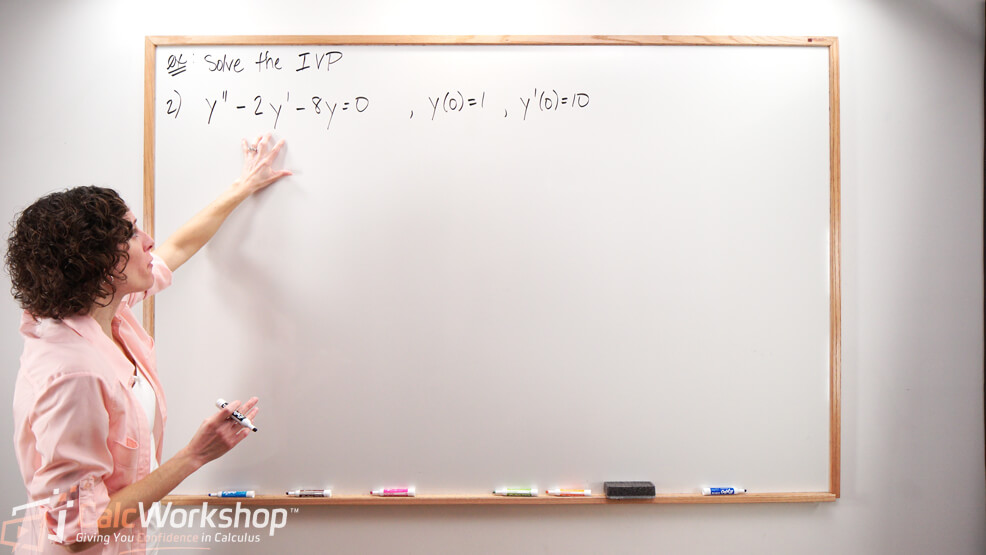Solving second order and higher order differential equations can be challenging, but for homogeneous, constant coefficient differential equations, we can use an easy-to-follow process that transforms our differential equation into a straightforward polynomial equation.

Jenn, Founder Calcworkshop®, 15+ Years Experience (Licensed & Certified Teacher)
How?
By the principal of superposition and the characteristic equation!
In fact, solving a second-order DE for distinct real roots has never been easier.
Let’s take a look.
Formulating the General Solution for Homogeneous Differential Equations
Okay, so a second-order differential equation is said to be linear if it can be written as
We call the function
Now, if each coefficient
First, let us guess that a possible solution of the equation
Well, we know that a value must be for which
And if we divide by
So, if we solve the characteristic equation above, we will find the value of
Wow!
Now, the characteristic equation, sometimes called the auxiliary equation, is easily obtained by replacing
In fact, this process can be extended to homogeneous linear higher order differential equations of the form
Three Possible Solutions to the Characteristic Equation
It is also important to note that when solving the characteristic equation, there are three possible solutions:
- All roots are real and distinct
- All roots are real, but some repeat
- All roots are imaginary or complex
Steps for Solving Homogeneous Differential Equations with Constant Coefficients
And the steps for solving for the general solution to a second-order or higher-order homogeneous differential equation with constant coefficients are straightforward:
- Step 1: Write the characteristic equation
- Step 2: Solve the polynomial equation for factors by using factoring, quadratic formula, synthetic division, etc.
- Step 3: Substitute each root into the general form:
Focus on Real and Distinct Roots
Please note that this lesson will focus on the roots of the characteristic equation that are real and distinct (different). In subsequent lessons, we will explore other possibilities, such as repeated roots and complex roots.
The main difference when dealing with complex roots lies in the characteristic equation, which requires a different general solution form involving trigonometric functions, sine and cosine, instead of exponential functions used for real and distinct roots.
Example: Solving a Second-Order Differential Equation
Let’s look at an example to see this process in action.
Find the general solution
First, we will transform our DE into the characteristic equation.
Next, we will solve the quadratic polynomial for our roots.
Now we plug our roots into the general solution formula of
Easy, right! Okay, let’s look at a higher-order DE and apply the same process.
Example: Solving a Higher-Order Differential Equation
Find the general solution
First, we will transform our DE into the characteristic equation.
Next, we will solve the quadratic polynomial for our roots.
Now we plug our roots into the general solution formula.
And that’s all there is to it! Nice!
Next Steps
Up next, you’ll:
- Deepen your understanding of second-order linear differential equations, a crucial skill in mathematics and engineering.
- Master the steps to find the general solution, enabling you to solve various types of differential equations.
- Improve your problem-solving skills by learning how to avoid common mistakes and tackle complex problems confidently.
- Expand your knowledge of real and complex roots, providing a comprehensive understanding of roots in differential equations.
- Enhance your ability to work with initial conditions, an essential skill for solving real-world problems involving differential equations.
It’s going to be fun, so let’s jump right in!
Video Tutorial w/ Full Lesson & Detailed Examples

Get access to all the courses and over 450 HD videos with your subscription
Monthly and Yearly Plans Available
Still wondering if CalcWorkshop is right for you?
Take a Tour and find out how a membership can take the struggle out of learning math.